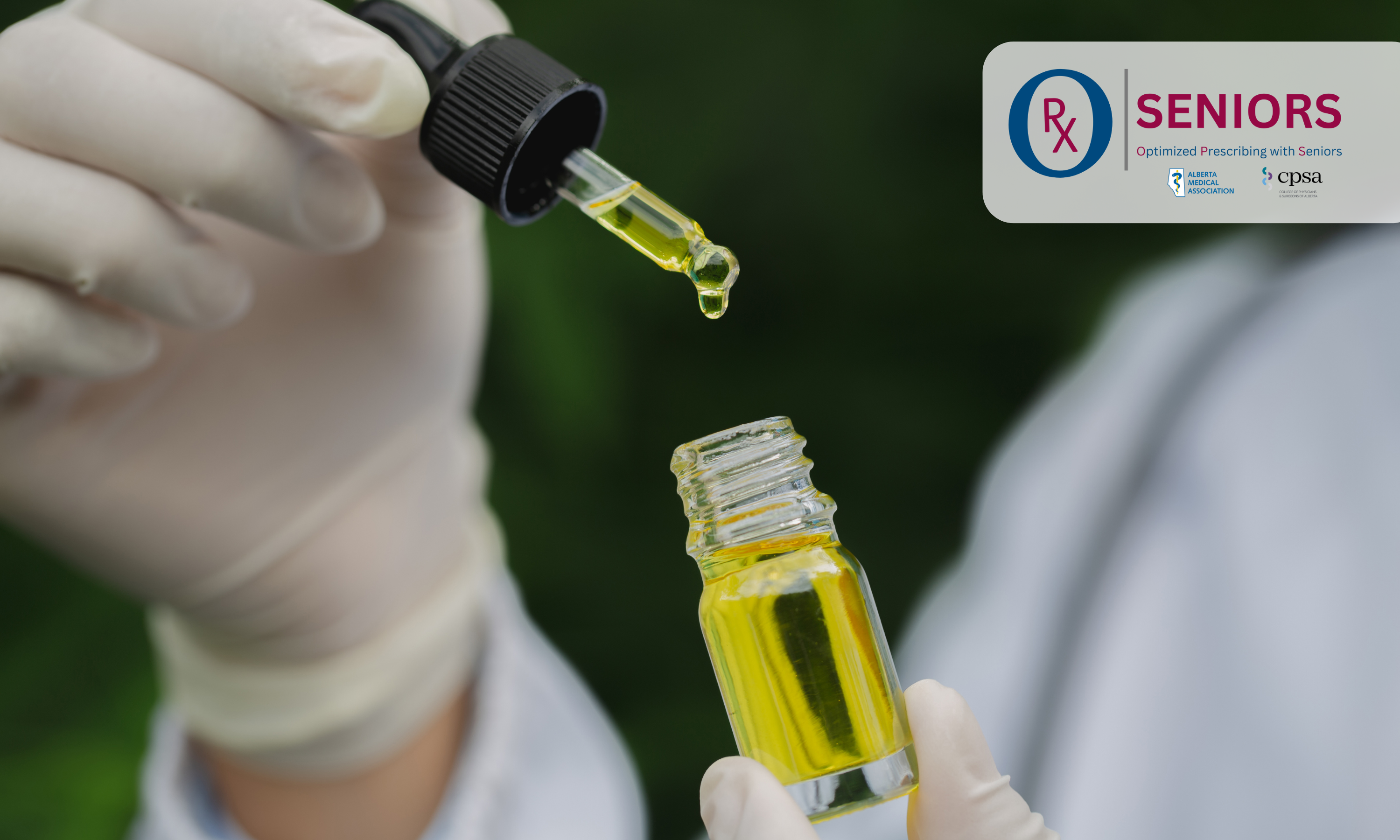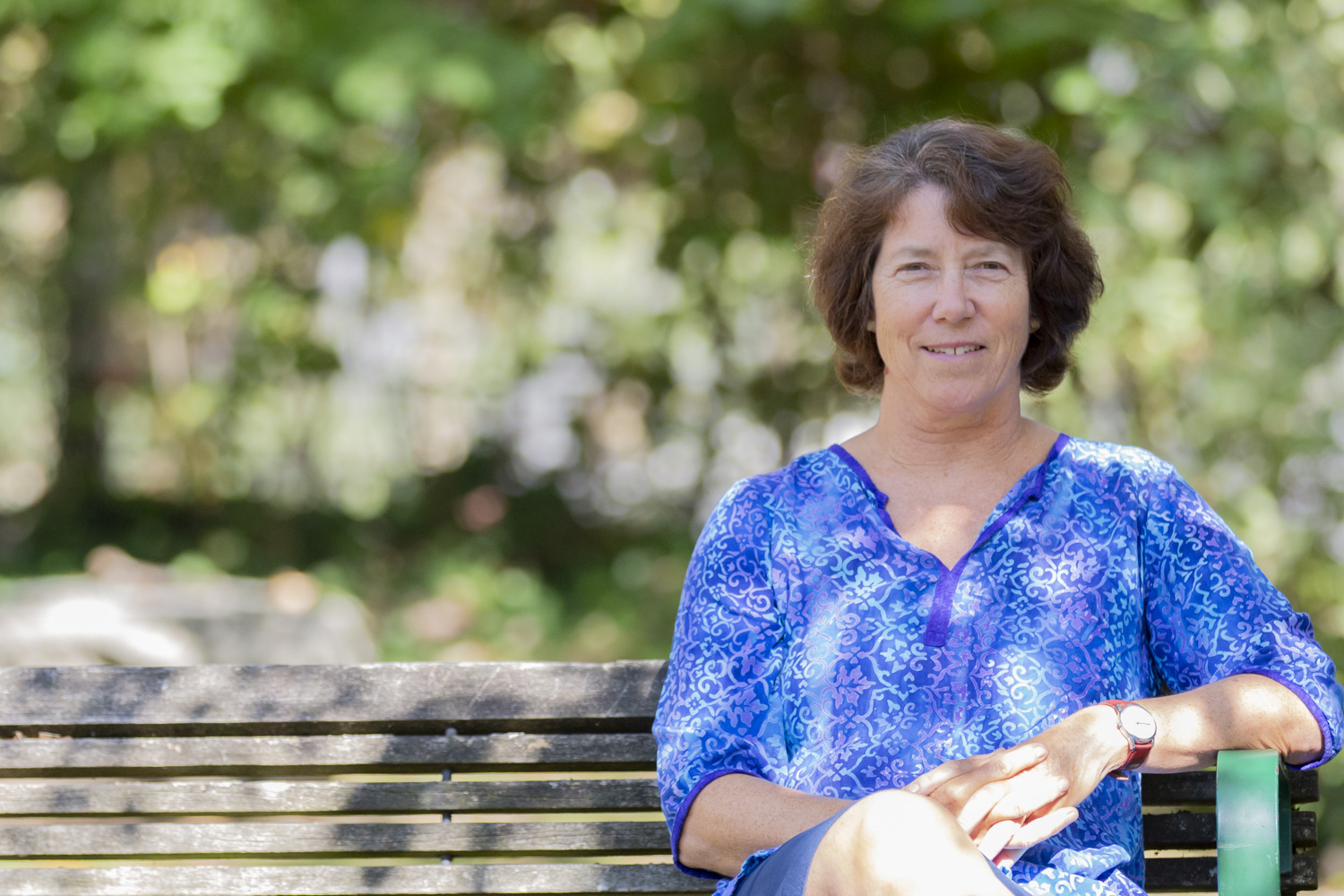Case
Frank, an 82-year-old retired longshoreman, is admitted to a long-term care facility with moderate cognitive impairment, severe osteoarthritis of the hips, COPD, sleep apnea, hypertension, mild renal impairment and a history of GI bleed. He appears uncomfortable despite regular acetaminophen and frequently calls out when receiving personal care. Food refusal is particularly distressing for the family. He is considered to require antipsychotic therapy for his and the staff’s safety. His grandson asks if he could bring in some medical cannabis oil to help his pain and settle him at bedtime.
Question
Is medical cannabis worth trying for symptom management, and if so, how?
Background
Many seniors are now taking cannabis extracts for a variety of reasons, only one of which is to seek euphoria. The vast majority take a cannabis-based product for management of a symptom, just as they do many other medications. With medical cannabis, however, it is often used with no medical direction, documentation or supervision. Just as with any new treatment option, we have an obligation to become informed so that we can provide our patients with sensible advice. They need to know what conditions may respond, what to try first, where to get it from, how much, what side-effects to look out for, and how to take it and when. Therapeutic trials need to be supervised, documented and modified according to effects, just the same as for any other symptomatic treatment. Our patients prefer to get their health care information from us rather than from the media, friends or people in recreational dispensaries. When inquiring about medical cannabis extracts, patients should not be faced with stigmatization and/or ignorance.
In seniors and those with chronic illness, the rates of use of medical cannabis are quite significant. About a quarter of cancer patients in BC, for example, take cannabis-based products for medical reasons. People living with neurodegenerative diseases such as Parkinson’s disease and multiple sclerosis are also high consumers, as are people living with arthritis of a variety of types. Though patchy in incidence, use of cannabinoids to manage dementia-related behaviours is also being seen quite frequently, with anecdotal reports of benefit. It is important to recognize that cannabinoids are involved in many of our essential physiological functions, so it’s going to be complicated. Messing with one specific cannabinoid function can impact multiple parts of our systems with many positive and negative effects. Plant-derived cannabis extracts contain many different substances, some of which also have therapeutic effects when isolated. This makes medical cannabis difficult to fit into the traditional clinical trial model.
Evidence
Clinical trials with the synthetic THC analogues dronabinol (Marinol, no longer available in Canada) and nabilone (Cesamet) and a standardised 1:1 plant-derived buccal spray called nabiximols (Sativex: ~$700 per prescription) provide an evidence base from which extrapolation to affordable plant-derived extracts may be done. There are a few studies of plant-derived products sufficient to allow systematic review, but most reviews conclude that the evidence is of poor quality. Regulatory restrictions have effectively prevented clinical trials of medical cannabis extracts from being done until recently and are still extremely difficult to negotiate. Don’t expect a plethora of clinical trials to come out in specific conditions. There is however limited clinical trial evidence from products like those that our patients can currently buy, which gives us at least a good place to start.
There is a wide variation in our genetic sensitivity to different cannabinoids, some of which are associated with chronic illnesses such as fibromyalgia and migraine. The two main cannabinoids in the vast majority of commercially available medical cannabis products are Tetrahydrocannabinol (THC) and Cannabidiol (CBD). THC has psychoactive properties and is responsible for most of the side-effects of medical cannabis, so an initial dose in a senior should be no more than 2.5 mg q4h prn, though the dose can be increased if well-tolerated, especially if only used at bedtime for sleep or dementia behaviours. A small observational study of 19 Swiss elders exhibiting behaviours due to Alzheimer’s disease including agitation, screaming, opposition and rigidity showed that a 1:2 CBD-predominant extract led to a very clinically meaningful reduction in distressing behaviours and was well-tolerated for over a year. In most participants it also allowed for deprescribing of antipsychotic, analgesic and antidepressant medications. The average total daily dose by the end of the study was 12.4 mg/day.1 Randomized controlled trials need to be done to confirm this effect, but the study does offer some guidance on dosing for dementia-related behaviours in the meantime.
THC has been shown to have analgesic, antiemetic and anxiolytic effects at low doses.2 The synthetic equivalent of plant-derived THC is nabilone (Cesamet), which is about five times as potent as THC. The effects of THC-only extracts can be assumed to be very similar to those of nabilone, which has moderate benefits in some patients for nausea, but is generally quite poorly tolerated. CBD has antipsychotic3 and anti-inflammatory effects both centrally and peripherally on its own and is well-tolerated even at much higher doses than THC, up to 100 mg/day. When taken in low doses (2.5-5 mg) concurrently with THC however, CBD reduces the side-effects of THC through complex effects on receptor binding in the central nervous system.
Medical cannabis therefore needs to be thought of not as a single entity, but as a range of potential therapeutic products. There is no “standard” dosing because of wide genetically determined inter-individual variation in sensitivity to cannabinoids as well as non-linear dose-response curves, particularly for anxiety. A low dose of THC may have an anxiolytic effect, but when the dose is increased there is a point above which it can make anxiety worse. The same appears to happen for nausea in a recreational context, where high doses of THC can cause a cyclical vomiting syndrome.
Recommendations
Consider every patient an “n-of-1,” for control of nausea, sleep disturbance, anxiety or pain starting with low doses of a balanced THC:CBD oil extract, at 2.5 mg of the THC component sublingually up to every four hours and adjust the dose according to effect. If unable to hold in the mouth for rapid onset of effect, the product can be swallowed on its own or mixed with suitable food for slower onset but longer duration of effect. For sleep, a larger single dose could be worked up to at bedtime, or intermittent dosing could be started early in the evening with the goal of reaching maximum effect by bedtime. If treating inflammation such as from arthritis, use a more predominantly CBD product at a dose of at least 5 mg CBD, and be ready to push the dose up if the patient tolerates it well. Highly concentrated CBD extracts are expensive, and dosing is likely to be limited more by cost than by side effects.
As with all medical treatments, medical cannabis use should be clearly documented, and patients should be encouraged to participate in clinical trials whenever possible. Adverse effects should be reported, and patients should be directed to legal safe sources of high-quality product, in Canada through the Health Canada-approved licensed producers (LPs) to ensure that the product is labelled accurately, is free of pesticide residues and molds, and the concentration of cannabinoids is consistent between batches. A list is available at Health Canada Licensed Producers. The table should be filtered by entering “Extracts” in the box at the top (reducing the number from 988 to 296). Those companies listed whose name is underlined in the first column sell direct to patients and clicking on the name will take the user directly to the seller’s website.
A “Medical Authorization” document is required for all LPs and must be submitted to the LP by the authorizer, not the patient. It requires the authorizer’s name and contact information and a recommended maximum dose written inexplicably in terms of equivalence to dried plant product. A recommended starting authorization would be “Oil extracts equivalent to a maximum of 1 g/day of dried plant product.” If recommending a CBD-predominant product it would be sensible to start with a maximum of 3 g/day instead, as doses tend to be higher.
Case outcome
Frank was started on 2.5 mg THC/5 mg CBD (three drops) of cannabis oil extract with breakfast, lunch and dinner, mixed with a spoonful of yoghurt, and an additional dose in a cup of hot chocolate at bedtime; the two food items he consistently accepts. Within 24 hours he is much less agitated, has stopped shouting and is accepting personal care. He is expressing more interest in food and only wakes once in the night. His antipsychotic medications have been stopped and he is showing improvement in daytime cognition. The family are happy to buy the oil online on his behalf and bring it in for him.
References
- Pautex S et al. Cannabinoids for behavioral symptoms in severe dementia: Safety and feasibility in a long-term pilot observational study in nineteen patients. Front Aging Neurosci. 2022 Sep 29;14:957665. doi: 10.3389/fnagi.2022.957665. Erratum in: Front Aging Neurosci. 2023 Mar 09;15:1176468. doi: 10.3389/fnagi.2023.1176468. PMID: 36247984; PMCID: PMC9557769.
- Bilbao, A., Spanagel, R. Medical cannabinoids: a pharmacology-based systematic review and
meta-analysis for all relevant medical indications. BMC Med 20, 259 (2022). https://doi.org/10.1186/s12916-022-02459-1 - Ghabrash M et al. Cannabidiol for the treatment of psychosis among patients with schizophrenia and other primary psychotic disorders: A systematic review with a risk of bias assessment. Psychiatry Research 2020, 286, 112890. ISSN 0165-1781,https://doi.org/10.1016/j.psychres.2020.112890.(https://www.sciencedirect.com/science/article/pii/S0165178119325399)
- Frane N, Stapleton E, Iturriaga C, Ganz M, Rasquinha V, Duarte R. Cannabidiol as a treatment for arthritis and joint pain: an exploratory cross-sectional study. J Cannabis Res. 2022 Aug 24;4(1):47. doi: 10.1186/s42238-022-00154-9. PMID: 35999581; PMCID: PMC9400326.
Additional note to prescribers
Receipts from an LP can be included as medical expenses for tax purposes. Purchases from walk-in dispensaries are currently ineligible, even if the product is marketed as for medical use.
Health Canada is apparently open to feedback about their website, with a pop-up survey appearing on the site. Physicians and patients are encouraged to provide feedback on the deficiencies of the table and difficulty with its navigation, as well as the need to change the dosing recommendation terminology for medical users, who generally prefer not to use dried plant product. A maximum daily dose of THC in mg would be a much more appropriate request, 15 mg/day being a reasonable maximum for cannabinoid-naïve patients.

